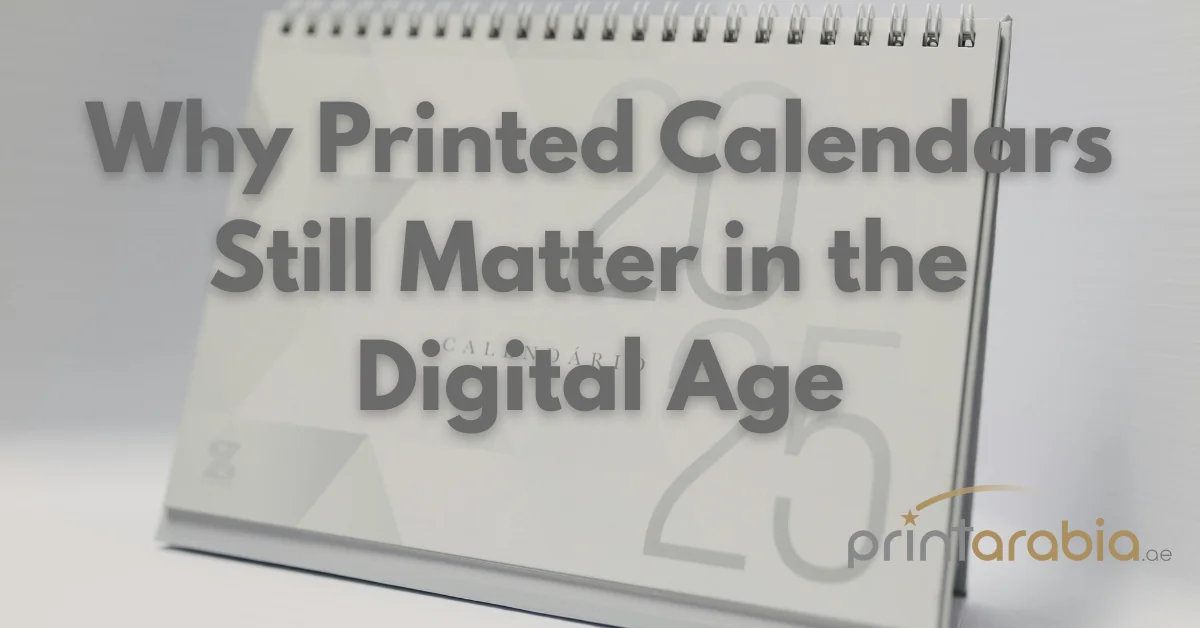
In a world where digital calendars synchronize across multiple devices with seamless precision, one might wonder if printed calendars have become relics of the past. Yet surprisingly, physical calendars continue to hold their ground in homes and offices worldwide. The persistence of printed calendars in the digital age speaks to fundamental aspects of human behavior and information processing that digital alternatives haven’t fully replaced. Far from being outdated, these tangible time-keepers offer unique benefits that complement our increasingly screen-dominated lives. They provide visual presence, tactile interaction, and persistent visibility that digital calendars for all their functionality-simply cannot match.
Why Printed Calendars Are Still Important
Printed calendars in the digital age serve purposes that extend well beyond their basic time-tracking function. While digital calendars excel at sending reminders and synchronizing schedules, physical calendars offer constant visual presence without requiring any clicks, swipes, or power sources. This persistent visibility creates what psychologists call “passive exposure”-we absorb information simply by glancing at the calendar throughout our day, reinforcing awareness of upcoming events, deadlines, and commitments.
Physical calendars also engage our spatial memory in ways that digital interfaces cannot. When we mark events on a printed calendar, we create visual-spatial associations that help us remember commitments more effectively. Research in cognitive psychology suggests that physical interaction with information, such as writing appointments by hand-strengthens memory formation and recall. This explains why many people report better remembering events they’ve written on a physical calendar compared to those entered digitally.
Furthermore, printed calendars serve as communal planning tools in homes and workplaces. A wall calendar in a kitchen or office creates a shared reference point that all household members or colleagues can view simultaneously without needing to share digital access or navigate different apps. This collective visibility facilitates coordination and creates a sense of shared timeline that digital tools often fragment across individual devices.
Functional Benefits for Offices and Homes
In professional environments, printed calendars offer practical advantages that digital alternatives struggle to match. A strategically placed wall calendar provides immediate schedule visibility to everyone in the space without requiring technology access. This becomes particularly valuable in manufacturing facilities, healthcare settings, or any environment where computer access is limited or impractical during daily operations.
For scheduling and resource management, many organizations maintain printed calendars alongside digital systems. Conference room bookings, equipment reservations, and shift schedules often appear on prominently displayed calendars that provide at-a-glance availability information to all staff members. The physical calendar serves as a visual backup that continues functioning even during network outages or system updates.
In home settings, family calendars help coordinate increasingly complex household schedules. A centrally located calendar creates a command center where family members can track appointments, extracurricular activities, and important dates. Parents particularly value printed calendars for teaching children time management and planning skills. The visual representation of time passing-seeing weeks and months laid out-helps young minds develop temporal awareness in ways that digital calendars often cannot replicate.
For seniors and others who may find digital interfaces challenging, printed calendars offer accessibility without technical barriers. The simple, familiar format provides essential time management without requiring device familiarity, password remembering, or navigation of complex interfaces.

Calendars as Promotional Tools for Businesses
Beyond their functional value, printed calendars serve as powerful marketing tools that maintain brand visibility throughout the year. When a company provides a useful, attractive calendar, they secure a year-long advertising presence in their customers’ environments. Unlike digital ads that disappear in seconds, a branded calendar delivers thousands of impressions over twelve months at a remarkably low cost-per-view.
Custom calendars transform everyday objects into relationship-building tools. When clients hang your calendar in their office or home, they create a daily touchpoint with your brand. Each time they reference the date, they subconsciously register your logo, contact information, or marketing message. This passive exposure builds familiarity and trust over time in ways that digital marketing struggles to achieve.
The gifting of calendars also leverages the principle of reciprocity in business relationships. By providing something of practical value, companies create goodwill and a subtle sense of obligation that can influence future business decisions. Organizations seeking to explore creative ways to boost brand visibility offline often find calendars offer exceptional return on investment compared to other promotional items.
What makes calendars particularly effective is their utility-to-visibility ratio. Unlike many promotional products that quickly lose their usefulness, calendars deliver value every day of the year while simultaneously keeping your brand in view. For businesses looking to complement digital marketing with tangible touchpoints, custom calendar printing services provide an effective way to maintain physical presence in customers’ environments.
Choosing the Right Custom Calendar
Selecting the appropriate calendar format depends on its intended use and placement. Wall calendars work best in spaces where multiple people need visualization of time, conference rooms, family kitchens, or retail back offices. Their larger format provides ample writing space for detailed scheduling and notes, while offering substantial real estate for high-impact visuals and branding elements.
Desk calendars serve different purposes, providing individual reference without occupying wall space. These personal planning tools typically feature more detailed daily breakdowns and note sections. From a marketing perspective, desk calendars create intimate brand engagement, sitting within arm’s reach throughout the workday.
For businesses creating promotional calendars, content consideration proves as important as format. Successful calendars provide genuine value through beautiful imagery, useful information, or practical features. Themed calendars aligned with your industry, gardening tips for landscaping companies, recipes for food brands, or maintenance reminders for automotive businesses, transform promotional items into valuable resources that recipients actively want to display.
When designing custom calendars, consider how they complement your broader marketing strategy. Calendars work particularly well alongside other timeless printed marketing materials for your brand to create cohesive offline touchpoints that reinforce your digital presence.

Make Every Day a Branding Opportunity
In our screen-saturated world, printed calendars offer a refreshing blend of practicality and permanence that continues to earn them wall space and desk real estate. Whether serving as organizational tools in busy households, planning resources in professional environments, or year-long marketing vehicles for businesses, physical calendars deliver unique benefits that their digital counterparts cannot replicate.
Ready to keep your brand in sight all year long? Explore PrintArabia’s range of custom calendar printing services, from desk calendars to wall designs. Start creating a calendar that blends practicality with promotion today!
